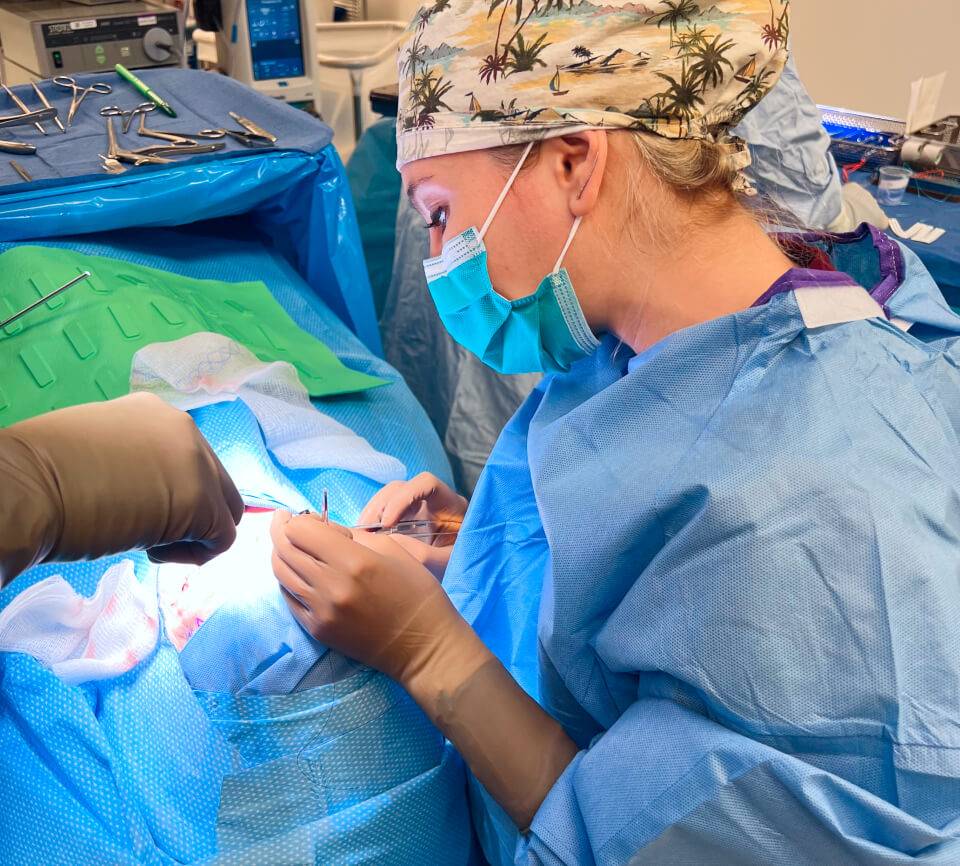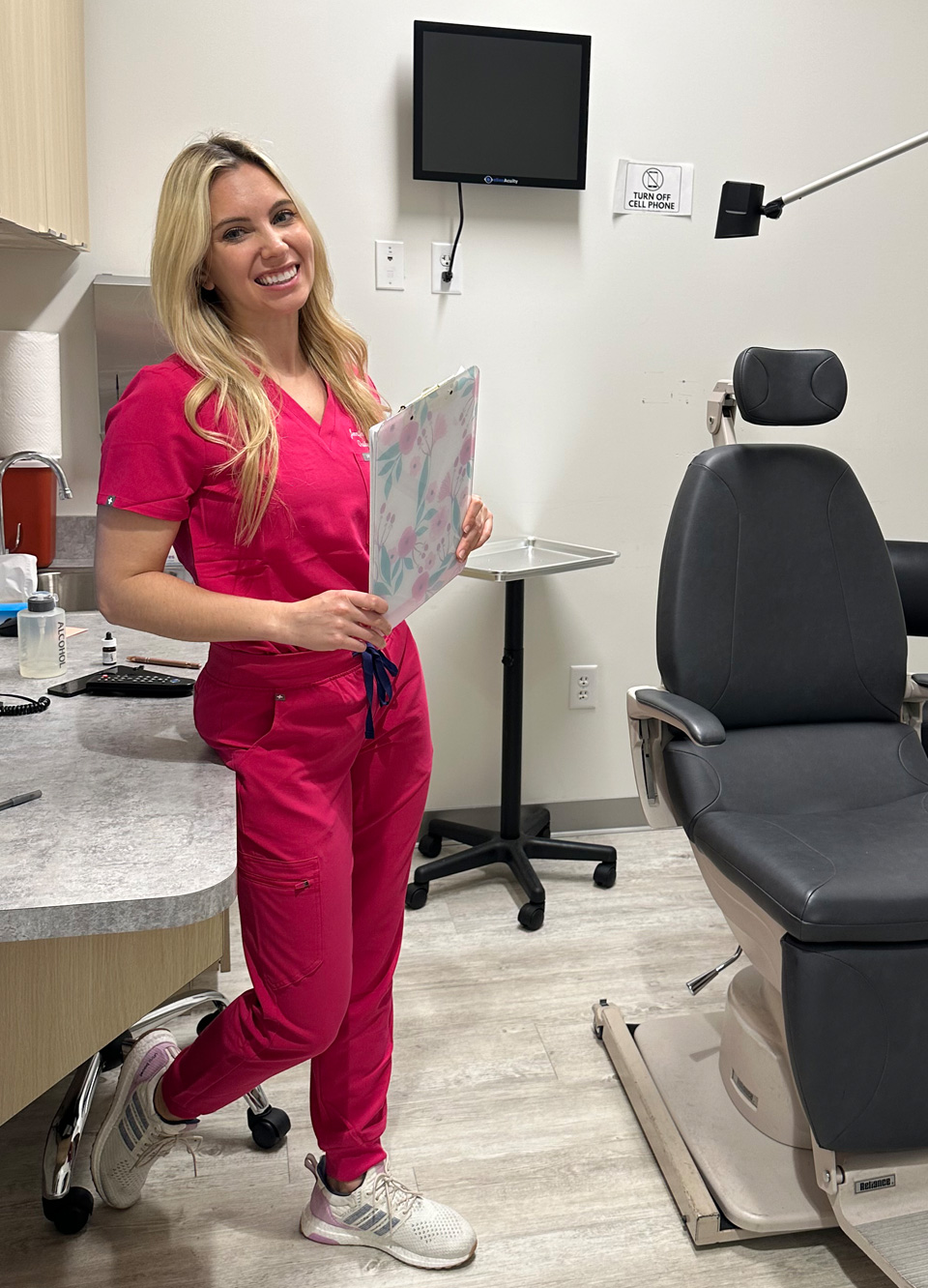Laser Skin Resurfacing


In the constantly growing field of cosmetic medicine, laser resurfacing stands as a revolutionary technique, offering a transformative solution for individuals seeking to revitalize their skin and reduce signs of aging. Whether addressing facial scars, reversing sun damage, correcting uneven skin tone, stimulating collagen regeneration, or getting rid of wrinkles and fine lines, laser resurfacing as emerged as a popular option promising remarkable results with minimal downtime. This is one of the most transformative solutions to combat aging that Jennifer Murdock, MD has to offer to the sun worshippers and aging population in South Florida.
Laser resurfacing is a popular cosmetic procedure that uses concentrated beams of light targeting pigment, water, or blood vessels within the skin. This innovative technique can dramatically improve skin’s appearance, making it a sought-after treatment for those aiming to achieve a smoother, more youthful complexion. As a plastic surgeon, Dr. Murdock often uses laser resurfacing in combination with cosmetic surgery to provide patients with optimal results affecting their skin and facial tissues. With this unique approach, Dr. Murdock can treat all the layers of the face, giving patients a more youthful and beautiful appearance.

Improved Skin Texture: Laser resurfacing can significantly enhance the smoothness and uniformity of skin texture, making it an ideal treatment for those with scars, rough textures, or uneven skin tones.
Reduction of Fine Lines and Wrinkles: By stimulating collagen production, laser resurfacing treatments can diminish the appearance of wrinkles and fine lines, particularly around the eyes and mouth. Lately, Dr. Murdock has also been utilizing new laser technology to treat the aging changes in other areas of the body, such as neck wrinkles and saggy skin around the knees.
Scar Treatment: Whether caused by acne, trauma, surgery, or burns, scars can be visibly diminished by laser resurfacing, restoring skin smoothness, even color, and consistency.
Pigmentation Correction: Different lasers can also address pigmentation issues such as age spots, sunspots, and freckles, resulting in a more even skin complexion. This is particularly important in Miami where Jennifer Murdock, MD sees patients with excess sun exposure and damage.

Scar Treatment: Whether caused by acne, trauma, surgery, or burns, scars can be visibly diminished by laser resurfacing, restoring skin smoothness, even color, and consistency.
Pigmentation Correction: Different lasers can also address pigmentation issues such as age spots, sunspots, and freckles, resulting in a more even skin complexion. This is particularly important in Miami where Jennifer Murdock, MD sees patients with excess sun exposure and damage.
Collagen Stimulation: The heat generated by laser energy stimulates elastin and collagen production, resulting in firmer, more youthful skin over time.
Minimal Downtime: Depending on the type and intensity of treatment, downtime associated with laser resurfacing is typically shorter that recovery from surgery and even traditional ablative lasers. The lasers that Dr. Murdock uses allow for quick recovery times, making it a convenient option for those with busy schedules.
Aftercare is pivotal for achieving the best results and minimizing complications, but also, prepping the skin for laser resurfacing can be beneficial as well. Jennifer Murdock, MD utilizes medical grade skin care products that have been scientifically proven to help prepare the skin for treatment and promote healing and skin rejuvenation afterwards. Dr. Murdock often recommends Regenerating Skin Nectar with TriHex Technology® by Alastin Skincare® to promote cell turnover, rid degraded and old elastin and collagen, and speed up recovery time.
Immediately following the procedure, the appropriate products will be applied to the treated areas, and a detailed skin care routine and post-treatment guide will be given to the patient. Each patient is instructed to use cool vinegar soaks multiple times a day after any ablative laser procedure to clean the treated areas, promote peeling of damaged skin, and prevent infection. Additionally, moisturizing ointments antiaging serums are recommended to facilitate healing, promote collagen stimulation, and provide optimal results.
Recovery times can vary significantly depending on the laser’s intensity and the treatment’s extent. Some patients might experience mild discomfort and redness for a week or two, while others may recover more quickly. Sun protection is absolutely critical during the healing process, as the new skin is particularly sensitive to sunlight. Various products from the medical-grade skincare lines of Alastin Skincare®, Colorescience®, and Cosmedix® with SPF are highly recommended by Dr. Murdock.
12750 NW 17th St, #226
Miami, FL 33182
601 N Federal Hwy, Suite 411
Hallandale Beach, FL 33009
Call: 305-315-5577
